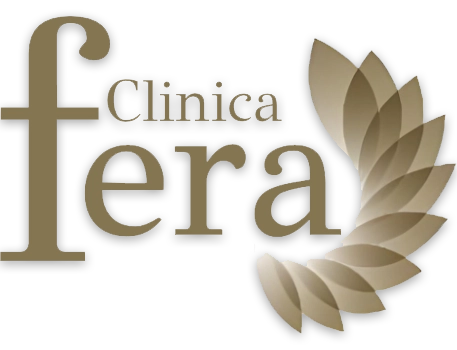What Exactly Is
Rhinoplasty Surgery?
Rhinoplasty is a surgical procedure that focuses on altering the size, shape, or proportions of the nose. It can address aesthetic concerns such as a hump on the bridge of the nose, a drooping or upturned tip, wide nostrils, or asymmetry. Additionally, rhinoplasty can also correct functional issues, such as breathing difficulties caused by a deviated septum or other nasal abnormalities.
There are two primary types of rhinoplasty procedures: open rhinoplasty and closed rhinoplasty. Open rhinoplasty involves making a small incision on the columella, the strip of tissue between the nostrils, allowing for better visibility and access to the nasal structures. Closed rhinoplasty, on the other hand, involves incisions made inside the nostrils, leaving no visible external scars. The choice between open and closed rhinoplasty depends on the specific needs and goals of the patient, as well as the surgeon’s recommendation.
Before undergoing rhinoplasty, several factors need to be considered. These include the individual’s overall health, the presence of any underlying medical conditions, and realistic expectations. It is essential to choose a qualified and experienced surgeon who specializes in rhinoplasty to ensure optimal results.
Preparing for Rhinoplasty Surgery
The journey towards rhinoplasty begins with an initial consultation with the chosen surgeon. During this consultation, the surgeon will assess the patient’s nasal structure, discuss their goals and expectations, and provide a comprehensive overview of the procedure. They will also inquire about the patient’s medical history, including any previous surgeries or nasal trauma.
In preparation for the surgery, the surgeon may request additional tests, such as blood work or imaging scans, to ensure the patient is in good health. Pre-operative instructions will be provided, which may include avoiding certain medications or supplements that can increase the risk of bleeding. It is crucial to follow these instructions closely to minimize any potential complications during and after the surgery.
The Rhinoplasty Procedure
On the day of the rhinoplasty procedure, the patient will be placed under anesthesia to ensure their comfort throughout the surgery. Depending on the complexity of the procedure and the patient’s preference, either general anesthesia or local anesthesia with sedation can be used.
The surgeon will then proceed with the chosen rhinoplasty technique, either open or closed, as discussed during the consultation. The specific steps involved in the surgery will vary based on the patient’s unique needs and goals. Common techniques include reducing or augmenting the nasal cartilage or bone, reshaping the nasal tip, or adjusting the nostril size.
While rhinoplasty is generally safe, like any surgical procedure, there are potential complications and risks to consider. These can include infection, bleeding, adverse reactions to anesthesia, scarring, or dissatisfaction with the final result. However, by choosing a skilled surgeon and carefully following post-operative instructions, the risk of complications can be significantly reduced.
Recovery and Aftercare
The recovery period after rhinoplasty surgery is a crucial phase that requires patience and adherence to the surgeon’s instructions. Immediately after the procedure, the patient’s nose will be bandaged to support the healing process and minimize swelling. Some discomfort, swelling, and bruising can be expected, but these side effects will gradually subside over time.
To manage pain and discomfort, the surgeon may prescribe pain medications or recommend over-the-counter options. Applying cold compresses and keeping the head elevated can help reduce swelling. It is essential to avoid strenuous activities and follow the surgeon’s guidelines regarding physical limitations during the initial recovery period.
Follow-up visits with the surgeon will be scheduled to monitor the healing progress and address any concerns. It is crucial to attend these appointments and communicate openly with the surgeon regarding any discomfort or unexpected changes. Over time, as the swelling subsides and the tissues heal, the final results of the rhinoplasty will become more apparent.
Achieving Desired Results
When considering rhinoplasty, it is important to have realistic expectations. The final outcome of the surgery can be influenced by various factors, including the individual’s nasal anatomy, skin thickness, and the surgeon’s skill and expertise. It is essential to communicate openly with the surgeon during the consultation to ensure a mutual understanding of the desired results.
Apart from the physical changes, rhinoplasty can also have a significant psychological impact on individuals. Many patients report increased self-confidence and improved overall satisfaction with their appearance after undergoing rhinoplasty. However, it is important to understand that rhinoplasty alone cannot solve underlying psychological issues or guarantee a complete transformation of one’s life.
Rhinoplasty for Medical Purposes
While rhinoplasty is often associated with cosmetic improvements, it can also serve important medical purposes. Some individuals may require rhinoplasty to correct breathing difficulties caused by a deviated septum, nasal valve collapse, or other structural abnormalities. These functional rhinoplasty procedures, such as septoplasty, aim to restore proper nasal function while also addressing aesthetic concerns.
Balancing functionality and aesthetics is a crucial aspect of rhinoplasty for medical purposes. It requires a thorough understanding of nasal anatomy and airflow dynamics to achieve optimal results. Patients considering rhinoplasty for medical reasons should consult with a surgeon who specializes in functional rhinoplasty to ensure proper evaluation and treatment.
Alternative Options to Rhinoplasty
In some cases, individuals may prefer non-surgical alternatives or temporary solutions to address their concerns without undergoing rhinoplasty. Non-surgical rhinoplasty procedures involve the use of injectable fillers to reshape or refine the nose temporarily. These fillers can provide results without the need for surgery, but it is important to note that they are not permanent solutions.
Dermal fillers can be used to correct minor imperfections, such as small bumps or asymmetries, or to enhance the nasal contours. However, it is crucial to consult with a qualified medical professional experienced in non-surgical rhinoplasty to ensure safety and optimal results. It is also important to understand the limitations of these procedures, as they may not be suitable for complex nasal deformities or functional issues.
Choosing the Right Surgeon
Selecting a skilled and experienced surgeon is of paramount importance when considering rhinoplasty. The surgeon’s expertise, qualifications, and artistic vision will significantly impact the final outcome of the procedure. To find a suitable surgeon, thorough research is essential.
When researching potential surgeons, it is crucial to consider their credentials and certifications. Board-certified plastic surgeons or facial plastic surgeons who specialize in rhinoplasty are recommended. Reviewing before-and-after photos of previous patients can provide insight into the surgeon’s skills and aesthetic preferences. Reading patient reviews and testimonials can also offer valuable information about the surgeon’s bedside manner and patient satisfaction.
Rhinoplasty for Ethnic Noses
Ethnic rhinoplasty requires special consideration to ensure the preservation of the individual’s cultural identity while achieving a balanced and harmonious result. Different ethnicities have unique nasal characteristics, and understanding these nuances is crucial for a successful outcome.
Surgeons experienced in ethnic rhinoplasty are familiar with specialized techniques and approaches that respect the patient’s ethnic features. They understand the importance of maintaining individuality and strive to achieve results that blend seamlessly with the patient’s overall appearance.
The Cost of Rhinoplasty
The cost of rhinoplasty can vary significantly based on several factors, including the surgeon’s expertise, geographic location, facility fees, anesthesia fees, and any additional procedures required. It is important to have a comprehensive understanding of the costs involved before committing to the procedure.
Insurance coverage for rhinoplasty varies depending on whether it is performed for cosmetic or medical reasons. In general, cosmetic rhinoplasty is considered an elective procedure and is not covered by insurance. However, if rhinoplasty is performed to correct breathing difficulties or functional issues, it may be partially or fully covered by insurance. It is important to consult with the surgeon and insurance provider to determine coverage and explore financing options if necessary.
Risks and Complications
Like any surgical procedure, rhinoplasty carries certain risks and potential complications. These can include infection, bleeding, adverse reactions to anesthesia, scarring, asymmetry, or dissatisfaction with the aesthetic outcome. It is crucial to discuss these risks with the surgeon during the consultation and understand the steps taken to minimize them.
Choosing a qualified and experienced surgeon greatly reduces the likelihood of complications. Following all pre-operative and post-operative instructions, and attending scheduled follow-up visits, is essential for a smooth recovery and optimal healing. In some cases, revision rhinoplasty may be necessary to address any concerns or refine the results.
Case Studies and Success Stories
To gain a better understanding of the potential outcomes of rhinoplasty, it can be helpful to review case studies and success stories. These showcase real-life examples of individuals who have undergone the procedure and share their experiences. Personal testimonials and before-and-after photos can provide insight into the transformational impact of rhinoplasty on self-confidence and overall satisfaction.
Frequently Asked Questions
- How long does it take to recover from rhinoplasty surgery? The recovery period can vary depending on the individual and the extent of the surgery. In general, it takes several weeks to months for the swelling to fully subside and the final results to become apparent.
- Can I wear glasses after rhinoplasty? It is generally recommended to avoid wearing glasses that rest on the bridge of the nose during the initial recovery period. Your surgeon will provide specific instructions on when it is safe to resume wearing glasses.
- Are the results of rhinoplasty permanent? Rhinoplasty can produce long-lasting results, but the aging process and natural changes in the nose over time can affect the appearance. With proper care and maintenance, the results of rhinoplasty can be enjoyed for many years.
- Is rhinoplasty painful? During the procedure, anesthesia is administered to ensure that patients do not experience pain. After the surgery, some discomfort, swelling, and bruising can be expected, but pain can be managed with prescribed medications.
Conclusion
Rhinoplasty surgery offers individuals the opportunity to reshape their nose and improve both their appearance and self-confidence. Understanding the process, including the procedure, recovery, risks, and alternative options, is crucial for making informed decisions. By choosing a qualified surgeon, having realistic expectations, and following pre-operative and post-operative instructions, individuals can achieve desired results that enhance their facial harmony and overall well-being.
The recovery period can vary depending on the individual and the extent of the surgery. In general, it takes several weeks to months for the swelling to fully subside and the final results to become apparent.
Yes, rhinoplasty can correct a deviated septum and improve breathing difficulties associated with nasal obstruction.
With closed rhinoplasty, the incisions are made inside the nostrils, resulting in no visible external scars. Open rhinoplasty may leave a small scar on the columella, but it is usually discreet and fades over time.
Rhinoplasty can be performed on teenagers; however, it is important to consider factors such as physical maturity, emotional readiness, and realistic expectations. Parental consent is usually required for individuals under the age of 18.
Yes, rhinoplasty can address a crooked nose by straightening the nasal structure and improving symmetry. The specific techniques used will depend on the individual’s unique case and goals.
Get In Touch With Us
book@clinicafera.com
Book An Appointment
Book a free consultation to ClinicaFera, simply fill out the form below and we will contact you back regarding the intervention you require.

